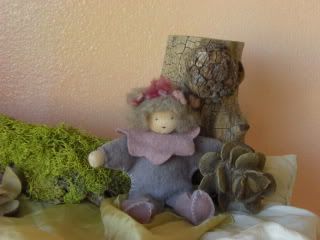Waldorf Playgroup Framework
(with Devana Came’s Guidance)
Important points
• Create a breathing-type (in-and-out) rhythm to the activities overall. An animated/vigorous activity followed by something gentle/calming. The same rhythm should be created within each activity too.
• Sing, sing, and sing! Instructions, transitions between activities, or for example sing “It’s time to watch our hands.â€
• Songs are sung on the pentatonic scale (a scale that is easily imitated by children). Most songs are very simple and can be made up as needed.
• The adults rarely speak directly to the children, but rather communicate by singing and modeling behaviour to the whole group.
• Children learn from imitating adults actions. All parents (not just the teacher) need to be conscious of what they are doing at the playgroup. The children will follow suit.
• The playgroup normally runs for about two hours.
• Each child brings a fruit to contribute to the fruit bowl snack.
• The Teacher or the hosting parent is supported by a parent assistant (who will be the hosting parent for the following week).
Format
– Children arrive 15 mins before the official start time to have time to let out some energy (run around outside, say hi to friends etc.)
– Opening Circle (10-15 mins depending on age)
– Free Play (30-40 mins)
– Clean up
– Hand washing
– Snack time
– Outside time
– Story time (10-15 mins)
– Free play (0-15 mins)
– Closing Circle
Activity Details
Opening Circle: The children are sung into the Circle by the host, so that there is an intentional beginning to the playgroup. Using the breathing approach, alternate songs with movements with quieter songs. Activities at this time are seasonal.
Opening Up Room: Play equipment and toys should be covered (i.e. with sheets) until it is time for the children to use them. Invite the children to help uncover the toys. Note: Anything that is not intended for play, books on shelves, TV’s, computers, should remain covered. Sheets can be purchased at a thrift store and plant-dyed a neutral color. The sheets can be passed from hosting parent to hosting parent.
Playtime: Always the longest activity. Parents can be doing Waldorf inspired crafts at the same time, which will keep them from overly interfering with the free play. Children are free to observe and be involved. The Assistant will be preparing the snack (cutting the fruit) at this time in the same room as the children. Have plastic knives and spare bread board available for the children to assist if they want. Keep play equipment simple:Â a basket of shells, another of silks, a dolls corner etc.
Clean up:Â Signal it is time to finish playing and clean-up with a song. Such as the Dusting Gnome Song.
Hand washing: The Assistant oversees the clean up.. Have two buckets: one with soapy water, another with clean water. The children wash their hands with assistance as necessary. A towel is there for them to dry their hands.
Snack time: The host will sing the children to the snack table with a Welcome to the Table song.
The group sings a (non-religious) food blessing (i.e. Earth that gives us… Sun who makes it….). The food is not put on the table until the blessing song has been sung.
Outside Time: The children are free to leave the table when they have finished eating and go outside to play. The assistant cleans up and puts away any toys. Parents should be outside with the children so the host and assistant can prepare for the following activities.
Story time: The teacher sings the children in for story time. The children sit in front of the Teacher, but behind a long rainbow silk or scarf. The story is always spoken (not read). Make the story visual by using props for landscapes (sheets, silks etc), puppets, logs and rocks etc. Use the same story for a number of weeks. Appropriate stories include Grimm’s tales and stories like The Little Red Hen. Devana has a list we can use. Note: many of the parents’ Waldorf craft activities will revolve around creating figures and props for imaginative story-telling.
Free Play: May include tactile activities like the food play game (making a pizza or soup on the children’s backs) or “Row, Row, Row the Boat†using a sheet for water and the children getting on the boat. Use creative props. Depending on the time this second free play can be skipped or lengthened as necessary.
Closing Circle: We could use a long silk or similar material to create a bridge for the children to go under as they leave the room (to go home or to play outside informally). Sing to the children as they leave “Good bye, good bye, blessings to you…â€Â Have the same routine every time so the children know it is time to go and formal activities have ended.
See pictures of Devana’s Waldorf classroom-in-progress here.

A close-up of one of Devana's nature tables.
Click here to see a planning sheet based on this framework.
